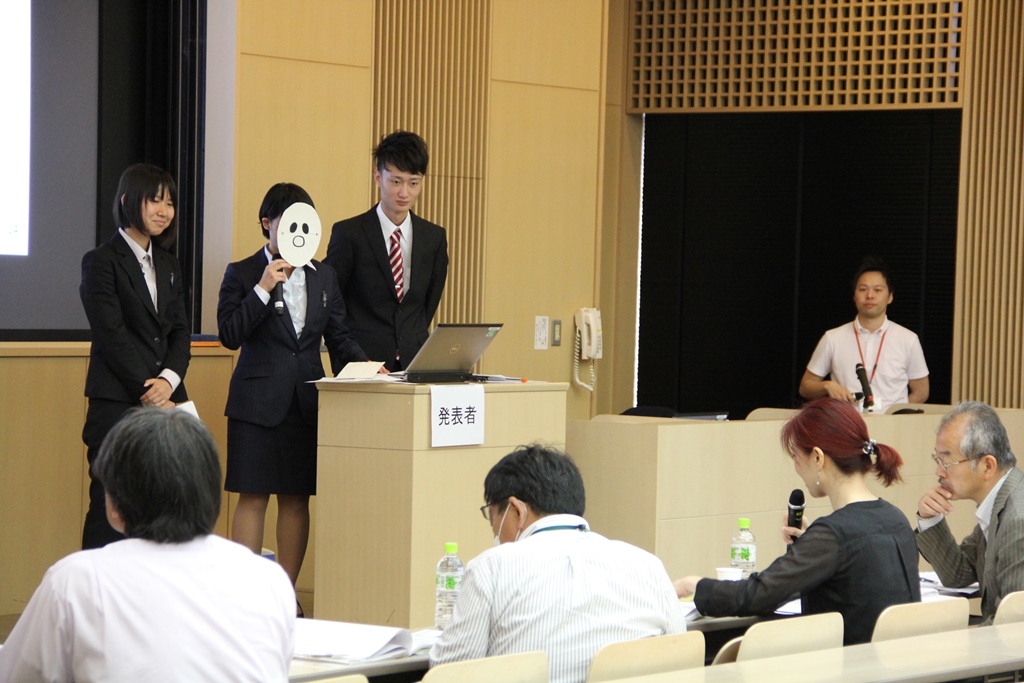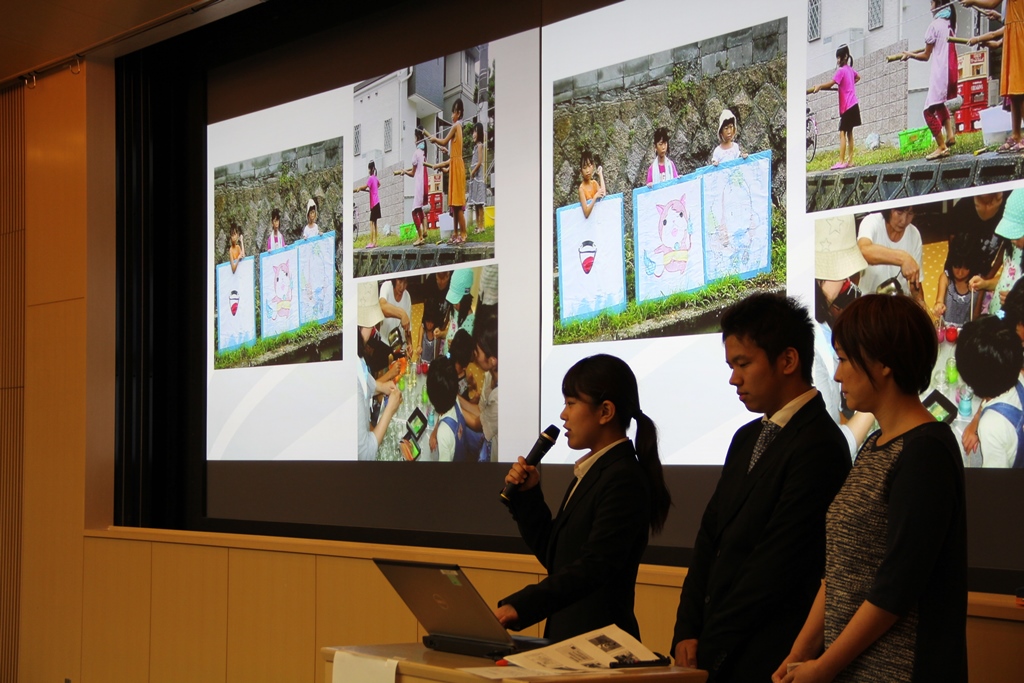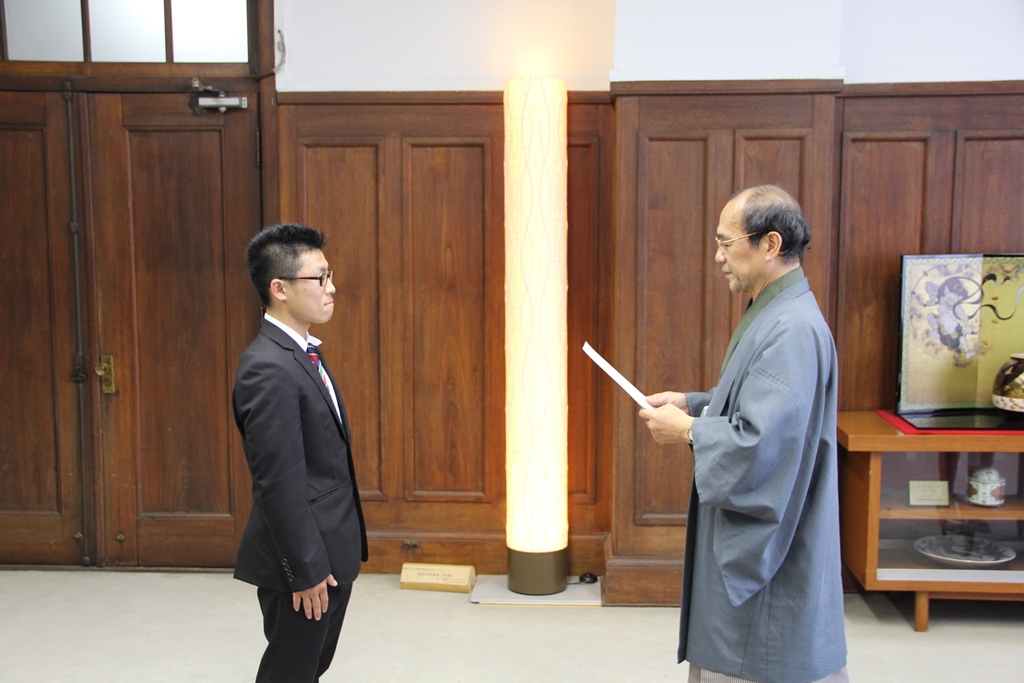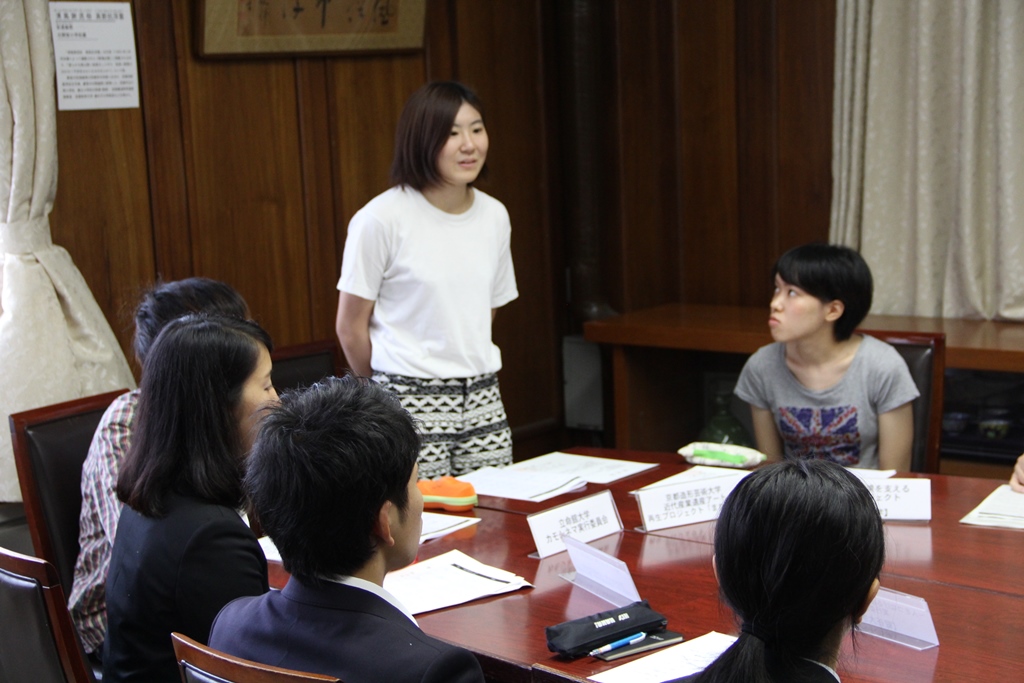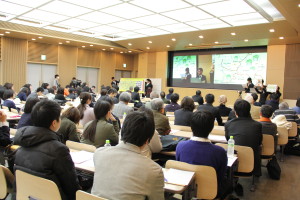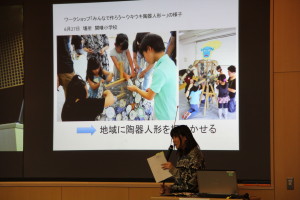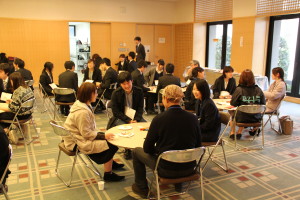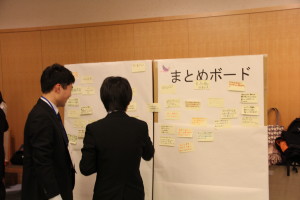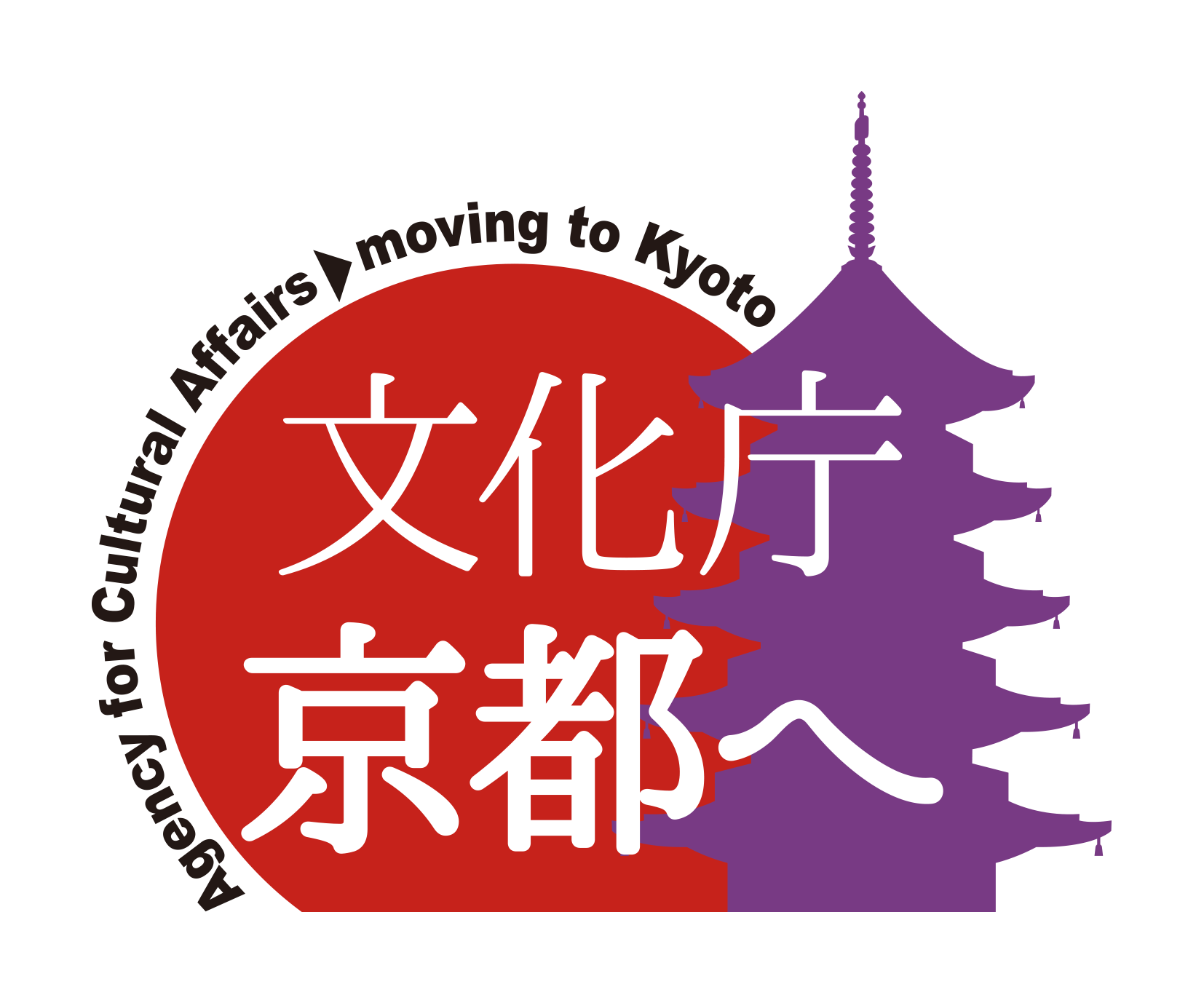The 2015 Activity Report data can be downloaded here.
Event Outline
Gakumachi Collaboration (University-Community Collaboration Creation and Support) Project
Explanation session: Sunday, March 29, 2015.
Public period: Wednesday, April 1, 2015 to Friday, May 15, 2015.
First screening: Wednesday, June 10, 2015. * Document screening.
Second screening: Sunday, June 28, 2015. * Public presentation screening
results will be announced in early July 2015.
Certification ceremony: Friday, July 10, 2015, 11:00-12:00. * Certificates will be issued by Kyoto City to selected projects.
Interim report: Friday, October 30, 2015. * Document submission
final report: Thursday, March 10, 2016 (for projects completed in February 2016, separate date for projects completed in March 2016). * Document submission
report meeting: Sunday, March 27, 2016.
Application
Application period
April 1st (Wed) – May 15th (Fri), 2015
*If you send it by mail, it must arrive on the same day. If you bring it in person, it must arrive by 5:00 p.m.
<Download the FY2015 application documents here>
● Application Guidelines (PDF link)
● Application form (Word link)
● Application form_Example (PDF link) [Applications for the FY2015 “School-City Collaboration Project” have closed.]
Selection Results
First screening (document screening)
18 projects passed the first round of screening
Second round (public presentation)
Sunday, June 28, 2015 10:00-15:30
Selected (passed the second screening) 14 organizations
[Support projects] 14 projects
| Application business name [support amount] |
Name of organization [Affiliated university name/Administrative district of operation] |
Business overview |
|---|---|---|
| The Great Sound Team! ~Concert for ages 0 and up~ [300,000 yen] |
Niconico Family Concert Executive Committee, a group of volunteer students from Kyoto City University of Arts [Kyoto City University of Arts/Shimogyo Ward, Ukyo Ward] |
The “Hoccori Space” in Ukyo Ward was established based on the Kyoto City project “Gathering Square” with the aim of “relieving the burden on parents raising children and creating an environment where they can raise their children with peace of mind.” We will be holding regular music concerts and workshops for parents and children there, aiming to create a place where parents and children can relax and connect with each other. We are also planning to hold a similar event at the “Friendly House Nishihachijo” in Shimogyo Ward, where we held the same event last year. |
| Keihoku Utsu Interaction and Learning [300,000 yen] |
Kyoto Seika University Keihoku Utsu Treasure Hunt Association [Kyoto Seika University/Ukyo Ward] |
This year’s project will particularly focus on promoting the charms of Utsu both domestically and internationally in various ways. Children’s photography classes will be held throughout the year, and the photos taken will be published on the website and used in a Utsu local calendar and photo collection. The Utsu local map created last year will be revised, and local guide signs will also be created. Materials remaining at the old Utsu Elementary School will be compiled into a database and archived, and access from outside will be encouraged. Other events will also be held to bring university students into contact with the local community. |
| Fushimi/Fukakusa Community Archives [300,000 yen] |
Fushimi-Fukakusa Community Archive Project [Ryukoku University/Fushimi Ward] |
Activities to preserve local “records” and “memories” as intellectual property are becoming more active nationwide. This project, led by students and local residents, will continue to collect, digitize, and make public as local materials materials (deteriorating 8mm film) that record the townscape and lifestyle of the Showa era from the perspective of the common people. This year, in addition to interviewing residents who retain those memories, the project will transcribe their valuable testimonies, and archive the local community of the Showa era through video and storytelling. |
| Environmental protection and Jizobon project in Fushimi Fukakusa and Higashi Takase River [300,000 yen] |
Ryukoku University Higashi Takase River Environmental Protection and Jizobon Project Team [Ryukoku University Junior College Division/Fushimi Ward] |
Higashitakasegawa River is cleaned and mowed by local groups, neighborhood associations, and students from the Systems Engineering Department of Fushimi Technical High School. Last year, I volunteered at the “Kawakubocho Jizobon” festival, which had the Higashitakasegawa River as a backdrop, and it was very well received by local residents. This year, I would like to get involved in cleaning up Higashitakasegawa River and participate in environmental protection and town development. I would like to not only participate in the event, but also deepen my research into the history of Jizobon and share the results with the local community. |
| Bicycle taxi Ropoli [300,000 yen] |
Misonobashi 801 Shopping District Promotion Association [Kyoto Sangyo University/Kita Ward] |
In cooperation with Kyoto Sangyo University students, we will start operating bicycle taxis as a new form of transportation for elderly people and people with disabilities who are not used to going out, or who have a destination but have limited means of transportation, i.e. people who are vulnerable to going out. Destinations (purposes of use) are expected to be shopping in the shopping district, going to the hospital, eating at restaurants, etc. The fare is 500 yen one way, the service will be available two days a week (Wednesday and Thursday) from 10:00 to 13:00 (3 hours a day), and phone inquiries will be accepted from 10:00 to 16:00 every day (Wednesday to Sunday). |
| Community and University Coexistence Project [300,000 yen] |
Kyoto College of Economics – Community and University Coexistence Project [Kyoto College of Economics/Nishikyo Ward] |
Through meetings with local elderly people over lunch every Friday, seminars by experts on solving problems four times a year, and interviews with local residents, students come into contact with local residents and raise awareness of problems together with them, and then work to solve local issues. Because Rakusai New Town is an artificially created community, it seems to anticipate the issues that arise in any region. It can be recognized as a starting point for young people to think about future “town development.” |
| Awataguchi Tea Ceremony Town Development [300,000 yen] |
Shirakawa Creation Association [Hanazono University, Ritsumeikan University, Kacho University, Kyoto Tachibana University/Higashiyama Ward] |
・Students will take the lead in implementing three tea ceremony projects that address local issues and needs. ・In order to attract many visitors, these will be implemented in conjunction with local events (Jizobon, Awata Shrine Summer Festival, Higashiyama Flower Lanterns). ・Senior tea masters will support students in learning management methods for each project, ensuring that they proceed smoothly. ・The details of the projects and the opinions of visitors will be recorded, and ultimately compiled into a booklet for distribution in the community. |
| Kyoto Sanjo-kai Shopping Street Terakoya Project [300,000 yen] |
Kyoto Koka Women’s University Koka Sanjo Girls [Kyoto Koka Women’s University/Nakagyo Ward] |
This project aims to further revitalize the Sanjo-kai shopping arcade by planning and implementing pre-events for the arcade’s events (last year there was the Tanabata Night Market and the arcade’s 100th anniversary calligraphy exhibition) and seasonal events, and by carrying out activities that will make the arcade a place for children to play and learn, and a place for the local community. This year, students will also be actively involved in the arcade’s events to link them with the Terakoya, expanding the connections. |
| Arashiyama Art Project [300,000 yen] |
Kyoto Saga University of Arts, Faculty of Arts, Department of Design, Tourism Design Division [Kyoto Saga University of Arts/Ukyo Ward] |
We will be implementing a project to exhibit artworks by art university students in Arashiyama, one of Kyoto’s major tourist destinations. We will hold art exhibitions and events at Randen Arashiyama Station and commercial facilities, and in order to strengthen ties with the local community, we will focus on toilets, the most frequently asked question topic in Arashiyama, and create an art space that will generate laughter from the unique perspective of students. Through these efforts, we hope to contribute to the preservation and development of the Arashiyama region’s inherent appeal as a town of art. |
| Toyoen ~Engawa Project that transcends time and distance~ [300,000 yen] |
Toyoen ~Connecting People Engawa Project~ Executive Committee [Ryukoku University/Shimogyo Ward] |
Our business is one that people of all ages, from young people to the elderly, can “easily participate in.” As part of this project, we will hold a Town Center Vegetable Expo, a Handmade Square, and a movie screening. At the Vegetable Expo, we will introduce vegetables from other regions and hold cooking classes using those local vegetables. At the Handmade Square, artisans and local people will teach us how to make things, and at the screening, we will show a video comparing the past and present, promoting intergenerational interaction from children to the elderly. |
| Miyako Light ’15 [150,000 yen] |
Miyako Light Executive Committee [Doshisha University, Kyoto Prefectural University, Ritsumeikan University, Kyoto Sangyo University, Ryukoku University/Kamigyo Ward] |
The Miyako Light Executive Committee is run by a team of mostly university students in Kyoto, with a staff of working adults. The aim is to encourage locals and visitors to rediscover the charm of machiya, the lifestyles of machiya, and the traditions of Kyoto from long ago by lighting up and experiencing machiya and other townscapes, which are uniquely Japanese structures that are disappearing every year, and to encourage them to take an interest in preserving machiya and the local area. |
| Kamo Cinema 11 [150,000 yen] |
Ritsumeikan University Camo Cinema Executive Committee [Ritsumeikan University/Kamigyo Ward] |
Once a month, we participate in the clean-up hike organized by the Kamogawa Beautification Association, and on August 22nd, we cleaned up the Kamogawa River in the afternoon and screened a movie on the river in the evening. By doing so, we hope to let more people know about the unique charm of the Kamogawa River and increase the number of people who want to take care of the river. We are carrying out this project with the belief that if people come to love the Kamogawa River, they will develop a desire to take care of the river, which will lead to beautification. |
| Reviving memories and records 2: Creating jobs [300,000 yen] |
Kyoto University of Art and Design Modern Industrial Heritage Art Regeneration Project “Makadori IX” [Kyoto University of Art and Design/Higashiyama Ward] |
This marks the 11th year since we started working on local development, mainly in the Mutsuhara school district of Higashiyama Ward. We have been closely involved in the local community, digging up overlooked culture and forgotten and buried history and resources from an artistic perspective, and have been working to make residents aware of these things through numerous events and workshops. This year, we will continue our previous activities and explore the possibility of using the town’s resources (pottery and Shoki) to create industry (jobs). |
| Inari Studies – Club-based Okoshiyasu, Travel Manners [300,000 yen] |
Ryukoku Project: Supporting the Future Environment [Ryukoku University/Fushimi Ward] |
This project will take a practical approach to travel etiquette and hospitality for foreign tourists visiting Japan, focusing on Fushimi Inari Taisha Shrine and the whole of Kyoto. It will be broadly divided into three pillars: 1) collecting and analyzing information on travel etiquette, 2) planning and implementing etiquette communication, and 3) disseminating the results of the project. By considering travel etiquette for foreign tourists from a student’s perspective, we will promote mutual understanding between the local community and tourists. |
Implementation Report
FY2015 Public Presentation Review (Second Round)
On Sunday, June 28, 2015, the second round of public presentations to decide this year’s selected projects was held at Campus Plaza Kyoto.
This year, 17 projects that passed the first round of document screening took part in the presentations, and each group gave a well-crafted presentation to highlight the effects and characteristics of their project, as well as their enthusiasm for it. During the question and answer session, the students worked hard to respond to the selection committee, and were seen fully demonstrating the results of their hard work and preparations as wonderful initiatives for revitalizing the local area.
A total of 125 people, including members of the presenting groups, attended the event, and listened intently to the students’ presentations, which were full of ideas for collaboration with the local community.
FY2015 Business Certification Ceremony
On Friday, July 10, 2015, a certification ceremony was held at Kyoto City Hall for the 14 projects selected this year, with Kyoto City Mayor Kadokawa and the selection committee in attendance.
At the ceremony, the mayor presented a certificate to the representative of each project, and the representatives of each certified organization expressed their determination to carry out their project, and we look forward to their future activities.
After the ceremony, the selection committee gave each of the selected organizations critiques and advice, allowing each organization to make a strong start toward revitalizing the local area.
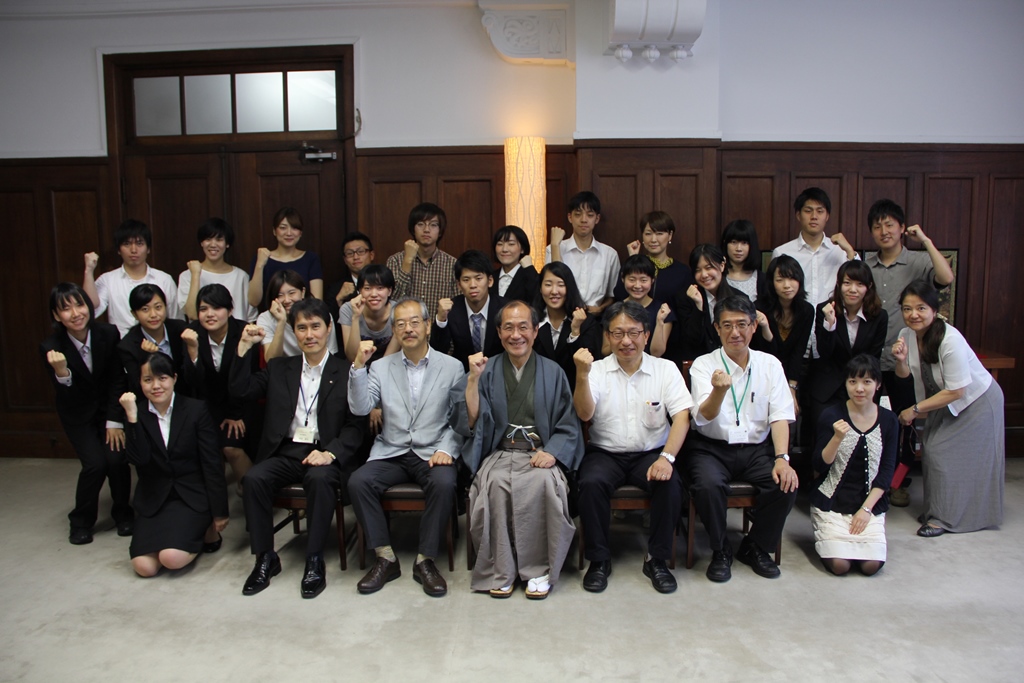
FY2015 Reporting Session
The FY2015 report session was held at Campus Plaza Kyoto on Sunday, March 27, 2016. In addition to holding an information session for FY2016 recruitment on the same day, a discussion and networking session was also held during the screening period, inviting not only related parties but also visitors to the event.
<<Reporting Session>>
Of the 14 groups selected this year, 13 groups (1 group was absent) reported on their activities. Each group made use of their 8-minute time to give a unique presentation on the results of their activities to date. The presentations gave a clear picture of the various efforts that each group has made in their local communities. In addition, during the 4-minute question and answer session that followed the presentations, the groups were seen to be sincerely answering the judges’ questions.
<Opinion exchange meeting/social gathering>
After the report session, an opinion exchange meeting/social gathering was held, moderated by a Kyoto City urban development advisor, as a place to frankly discuss what was learned through the Gakumachi Collaboration Project. Approximately 50 participants, including not only those involved with the selected organizations but also those who came to listen to the presentations, split into groups of 4 or 5 and exchanged opinions while changing group members on themes such as what they learned from the activities, specific episodes that led to their learning, what they would like to do in the future through regional collaboration, and their expectations. In order to share what was discussed in the groups, participants wrote down their most memorable things on sticky notes and posted them on the board at the end, further deepening their interactions.
<Award Ceremony and Commentary>
Following on from last year, this year we once again awarded business organizations that have achieved outstanding results. The organization selected as the outstanding organization this year was the “Nico Nico Family Concert Executive Committee, a group of volunteer students from Kyoto City University of Arts.” They were recognized for putting into practice the objectives they clearly set out when they applied, and for clearly describing their activities in their own words, which led to their award. Congratulations!! We
also hope that all of the organizations will continue to make use of the lessons they have learned and the connections they have made through their activities and continue their activities in the future!!
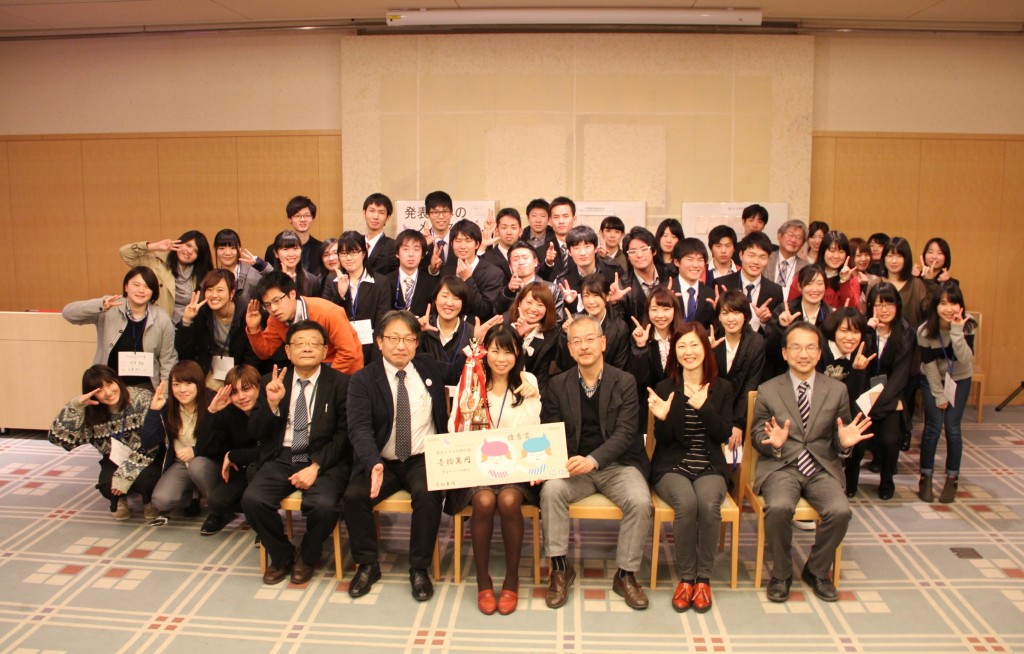
Where to submit application documents and where to contact
University Consortium Kyoto, a public interest incorporated foundation, Gakumachi Collaboration Project Contact:
TEL: 075-353-9130 FAX: 075-353-9101
MAIL: gakumachi-admin-ml■consortium.or.jp
(Please change ■ to @ before sending)
Campus Plaza Kyoto, Nishinotoin-dori Shiokoji-sagaru, Shimogyo-ku, Kyoto 600-8216
*Reception hours: Tuesday to Saturday 9:00-17:00














